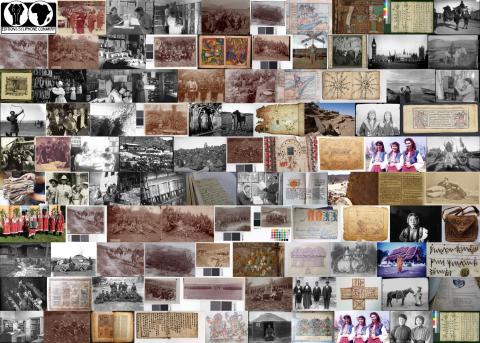
Aims and objectives
The project aims to make digital photographs of a rare privately-owned cache of Mongolian and Tibetan manuscripts that were spared from the communist repression and recently unearthed from caves in the Outer Mongolian province of Dorngobi.
These manuscripts belonged to the person of Danzan Ravjaa (Tib. Bstan ‘dzin rab gyas/ 1803-1857), the 5th incarnation in the lineage of the Gobi Noyons, whose monastery was the centre of a political and artistic renaissance at the crossroads of Tibet, Mongolia and China in the 19th century. Danzan Ravjaa is significant for his eclectic religious outlook that combined both the reformed ‘Yellow Hat’ and the unreformed ‘Red Hat’ sects of Tibetan Buddhism. Besides his eclectic religious orientation, he was an artist and polymath who left behind scores of operas, poems and prophecies.
In 1938, during the suppression of Buddhism in Mongolia under the communist regime, Danzan Ravjaa’s works were hidden in the mountains along with the rest of the monastery’s artistic and intellectual heritage. A map was passed down from father to son in the family of the monastery’s gatekeepers. After the transition to democracy in 1991, the present gatekeeper, Altangerel, unearthed 24 crates of manuscripts and artifacts which he housed in a small museum in Sainshand, about 740 kilometres south of the capital Ulaanbaatar. Another 22 boxes remain buried in the mountains with plans to dig them out in the near future (International Herald Tribune article 17-18 August 2002).
At present, the museum has little money and no security system to guard against theft, mice or fire. Instead, the family members take turns standing guard to protect the relics. Currently, the small museum houses over 5000 manuscripts. About 1000 are works by Ravjaa himself, with another 600 works related to Ravjaa’s lineage, authored by other Mongolian and Tibetan lamas. The remainder of the collection consists of canonical literature which already exists in Western collections and will not be the concern of this project.
This project will focus only on copying Ravjaa’s own writings and works by other authors relevant to Ravjaa’s lineage. Ravjaa’s own writings span a wide range of subjects. They include hundreds of spiritual songs: a famous opera called The Moon Cuckoo; several commentaries and stage notes on the opera; philosophical and polemical treatises; biographies of Tibetan and Mongol saints and finally his own esoteric cycle of Buddhist teachings.
The latter represent a distinct line of non-canonical Buddhist transmission in Mongolia, in that they were transmitted directly to Ravjaa in mystical communication with deities and legendary masters of the past. In Tibet, these types of texts are referred to as Terma, or ‘Treasure texts’, and they became the basis of the Red Hat Nyingmapa sect. But in Mongolia, they were previously unheard of.
Additional funding has been secured from Axis Mundi Foundation (Switzerland) for the purchase of the project hardware.
BBC picture report here
Outcomes
This project created a total of 43,350 digital TIFF files during its two-year course. These included all of the manuscripts found in the collection that were authored by Ravjaa. These constituted the heart of the collection and consisted of manuscripts in both classic Mongolian and Tibetan. Subject matter ranged from poetry, astrology, medicine, plays (original manuscripts of the Moon Cuckoo operetta) and sadhanas (including some of Ravjaa’s ‘pure visions’ centering on the figure of Guru Rinpoche and his two consorts Yeshe Tsogyal and Lady Mandarava). This material, it is now hoped, will help scholars and researchers open up new areas in the field of Tibetan and Mongol studies.
Instead of systematically scanning what came out of the crates, some of which were redundant copies of common canonical literature, the project changed its strategy to hunt down and select manuscripts that were authored solely by Ravjaa himself, or authors relevant to his lineage. This was at times challenging, access to some of the unopened crates in the museum was not always forthcoming, while some important manuscripts from the collection had been sent away on loan and never returned.
The records copied by this project have been catalogued as:
- EAP031 Danzan Ravjaa (Bstan 'dzin rab gyas) (before 1857)
Due to the cyber-attack on the British Library in October 2023, the archives and manuscripts database is currently inaccessible and we are unable to provide links to the catalogue records for this project.




